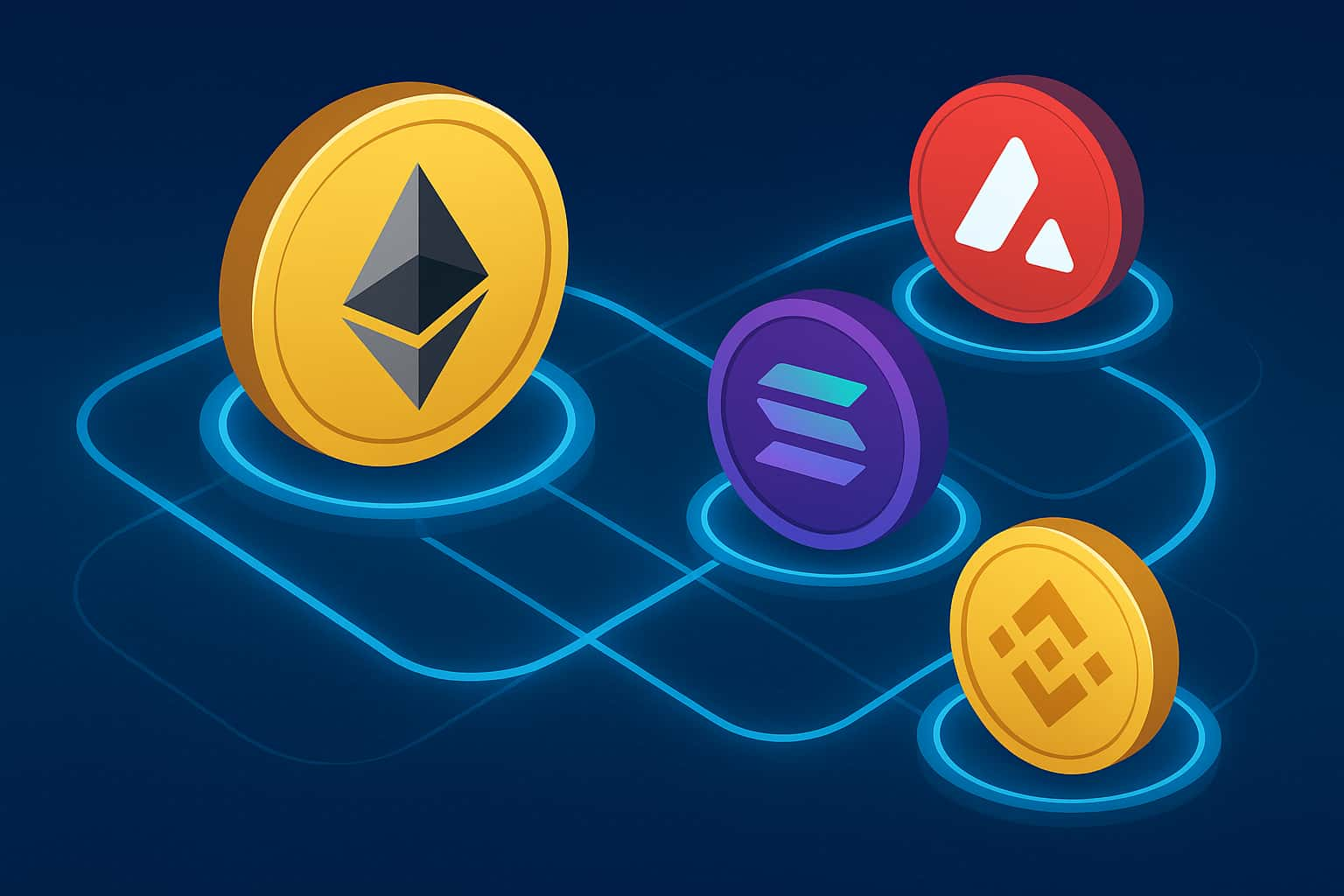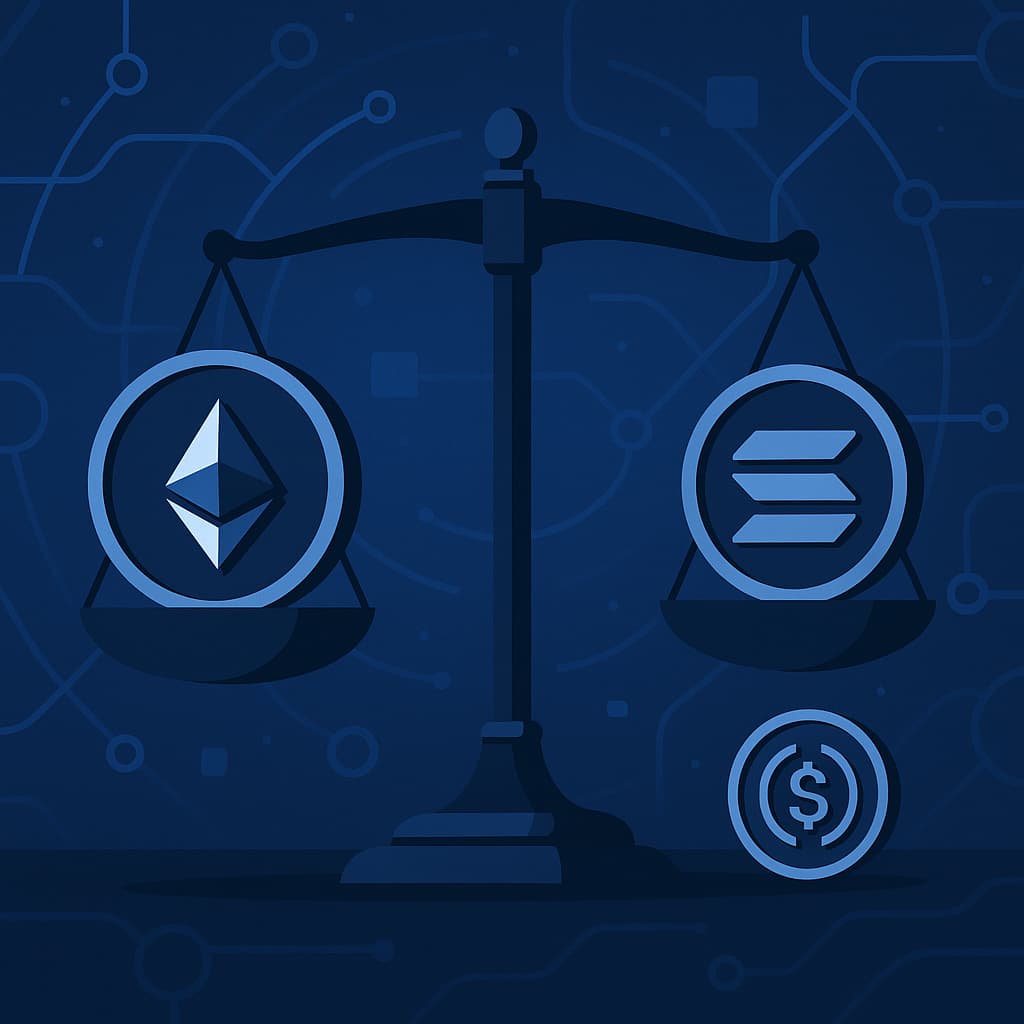-
In the rapidly evolving landscape of blockchain technology, smart contract development have become pivotal in enabling decentralized applications (DApps) and fostering innovation across various industries. Among these platforms, Soroban, built on the Stellar network, stands out as a robust and versatile solution designed to address the unique challenges of scalability, security, and interoperability. This comprehensive exploration delves into the intricacies of Soroban, examining its technical architecture, core features, use cases, benefits, challenges, and the future trajectory that positions Stellar blockchain development as a viable platform in the smart contract ecosystem.
Introduction to Soroban
What is Soroban?
Soroban is Stellar's native smart contract platform, engineered to provide developers with a powerful and flexible environment for building decentralized applications. Unlike traditional smart contract platforms that often grapple with issues like high transaction fees and limited scalability, Soroban leverages Stellar's proven infrastructure to deliver a seamless and efficient development experience. By integrating advanced features such as WebAssembly (Wasm) support, Soroban enables high-performance smart contracts that are both secure and scalable.
The Stellar Network Overview
Stellar is a decentralized protocol designed to facilitate fast, low-cost cross-border payments and asset transfers. Founded in 2014 by Jed McCaleb and Joyce Kim, Stellar aims to connect financial institutions and reduce the friction in global financial transactions. With its consensus mechanism based on the Stellar Consensus Protocol (SCP), Stellar ensures quick transaction finality and robust security, making it an ideal foundation for building sophisticated smart contract platforms like Soroban.
Also, Explore | Stellar Launches Smart Contracts: Soroban Now Live on Mainnet
Technical Architecture of Soroban
WebAssembly (Wasm) Integration
Soroban leverages WebAssembly (Wasm) as its primary execution environment for smart contracts. Wasm is a binary instruction format that allows high-performance code execution across different platforms. By adopting Wasm, Soroban ensures that smart contracts are not only fast and efficient but also secure and portable. This integration facilitates the development of complex DApps with enhanced functionality and performance.
Stellar Consensus Protocol (SCP)
At the core of Soroban lies the Stellar Consensus Protocol (SCP), which underpins the network's security and reliability. SCP is a federated Byzantine agreement (FBA) system that allows decentralized decision-making without relying on a central authority. This consensus mechanism ensures that Soroban's smart contracts are executed in a trustworthy and tamper-proof manner, maintaining the integrity of the entire ecosystem.
Scalability and Performance
Soroban is designed to handle a high volume of transactions with minimal latency. By building on Stellar's scalable infrastructure, Soroban can process thousands of transactions per second (TPS), making it suitable for applications that require real-time processing and high throughput. This scalability is crucial for supporting a diverse range of use cases, from financial services to gaming and beyond.
Security Measures
Security is paramount in smart contract platforms, and Soroban incorporates multiple layers of protection to safeguard against vulnerabilities and exploits. These measures include formal verification of smart contracts, rigorous auditing processes, and the use of secure programming practices. Additionally, Soroban benefits from Stellar's established security framework, which has been battle-tested over years of operation.
Also, Check | Exploring Stellar Blockchain in Cross-Border Payments
Core Features of Soroban
Programmable Smart Contracts
Soroban empowers developers with the ability to create highly programmable smart contracts using Wasm-compatible languages such as Rust. This flexibility allows for the implementation of complex logic and custom functionalities, enabling the development of sophisticated DApps tailored to specific needs and use cases.
Interoperability
One of Soroban's standout features is its focus on interoperability. By integrating seamlessly with Stellar's existing infrastructure and supporting cross-chain communication protocols, Soroban ensures that smart contracts can interact with assets and data across different blockchain networks. This interoperability expands the potential applications of Soroban, fostering a more connected and versatile blockchain ecosystem.
Low Transaction Fees
Stellar is renowned for its low transaction fees, and Soroban inherits this advantage. By minimizing the cost of executing smart contracts, Soroban makes decentralized applications more accessible and economically viable. This cost efficiency is particularly beneficial for microtransactions and applications targeting users in regions with limited financial resources.
Developer-Friendly Environment
Soroban is designed with developers in mind, offering comprehensive tooling, extensive documentation, and robust support to facilitate the development process. The platform's compatibility with popular development languages and frameworks ensures a smooth and efficient workflow, enabling developers to focus on creating innovative solutions rather than grappling with technical constraints.
Upgradeability and Flexibility
Soroban supports upgradeable smart contracts, allowing developers to enhance and modify their DApps without disrupting existing functionalities. This flexibility is essential for adapting to evolving requirements and incorporating new features, ensuring that Soroban-based applications remain relevant and competitive in a dynamic market.
Also, Discover | Idris Elba's Stellar Journey Towards Human Empowerment
Use Cases of Soroban
Decentralized Finance (DeFi)
Soroban is poised to revolutionize the DeFi landscape by providing a scalable and secure platform for building financial applications. From decentralized exchanges (DEXs) and lending platforms to stablecoins and yield farming protocols, Soroban's robust infrastructure enables the creation of a wide array of DeFi solutions that offer greater accessibility, transparency, and efficiency compared to traditional financial systems.
Asset Tokenization
Soroban facilitates the tokenization of real-world assets, such as real estate, art, and commodities. By converting physical assets into digital tokens, Soroban enables fractional ownership, easier transferability, and enhanced liquidity. This democratization of asset ownership opens up new investment opportunities and broadens access to previously illiquid markets.
Supply Chain Management
In supply chain management, Soroban enhances transparency and traceability by providing immutable records of transactions and asset movements. Smart contracts on Soroban can automate processes such as inventory tracking, quality verification, and payment settlements, reducing fraud, minimizing delays, and improving overall efficiency.
Gaming and NFTs
Soroban supports the development of blockchain-based games and non-fungible tokens (NFTs), enabling true ownership of in-game assets and facilitating decentralized marketplaces. By leveraging Soroban's scalability and low fees, game developers can create immersive and interactive experiences without the limitations imposed by traditional gaming infrastructures.
Identity and Access Management
Soroban can be utilized to build decentralized identity solutions, providing users with secure and verifiable digital identities. These identities can be used for authentication, access control, and compliance with regulatory requirements, enhancing privacy and security while reducing reliance on centralized authorities.
Decentralized Autonomous Organizations (DAOs)
Soroban provides the necessary infrastructure for creating and managing DAOs, enabling decentralized governance and decision-making. Smart contracts on Soroban can facilitate voting, proposal submission, and fund allocation, empowering communities to collectively manage and govern their projects and initiatives.
You may also like | How to Create Stellar Smart Contract using Soroban
Benefits of Soroban
Enhanced Scalability
Soroban's ability to handle a high volume of transactions with low latency makes it suitable for a wide range of applications, from high-frequency trading to large-scale gaming platforms. This scalability ensures that Soroban can support the growth and expansion of DApps without compromising performance.
Robust Security
By leveraging Stellar's secure consensus mechanism and implementing advanced security measures, Soroban ensures that smart contracts are executed safely and reliably. This robust security framework protects against common vulnerabilities and exploits, fostering trust and confidence among users and developers.
Cost Efficiency
Soroban's low transaction fees make it an economically viable option for developers and users alike. This cost efficiency is particularly advantageous for applications that require frequent transactions or target users in regions with limited financial resources, promoting broader adoption and usage.
Interoperability and Flexibility
Soroban's focus on interoperability enables seamless interaction with other blockchain networks and traditional financial systems. This flexibility allows developers to create versatile and interconnected applications, expanding the potential use cases and enhancing the overall utility of the platform.
Developer Support and Ecosystem
Soroban offers comprehensive support to developers through extensive documentation, tooling, and community resources. This strong developer ecosystem fosters innovation and collaboration, driving the continuous improvement and expansion of Soroban-based applications.
You may also explore | Stellar Blockchain Use Cases | A Quick Explainer
Challenges and Considerations
Adoption and Network Effects
As with any emerging technology, widespread adoption is critical for Soroban's success. Building a robust ecosystem of developers, users, and partners is essential to harness network effects and drive the growth of the platform.
Competition with Established Platforms
Soroban faces competition from established smart contract platforms like Ethereum, Binance Smart Chain, and Solana. Differentiating itself through unique features, superior performance, and strategic partnerships is crucial to gaining a competitive edge in the crowded blockchain landscape.
Regulatory Compliance
Navigating the evolving regulatory landscape is a significant challenge for Soroban and its developers. Ensuring compliance with global regulations while maintaining decentralization and user privacy requires careful planning and proactive measures.
Security Risks
Despite robust security measures, Soroban remains susceptible to emerging threats and vulnerabilities. Continuous monitoring, regular audits, and proactive security practices are essential to safeguarding the platform and its users from potential exploits.
User Education and Experience
Ensuring that users understand and can effectively interact with Soroban-based applications is vital for adoption. Enhancing user experience through intuitive interfaces, comprehensive tutorials, and responsive support can help bridge the gap between technology and end-users.
You may also check | Understanding Stellar Operations by Users in a Stellar Blockchain
Future Prospects and Developments
Integration with Emerging Technologies
Soroban is well-positioned to integrate with emerging technologies such as artificial intelligence (AI), the Internet of Things (IoT), and decentralized finance innovations. These integrations can unlock new use cases and drive the evolution of decentralized applications.
Expanding Ecosystem and Partnerships
Building strategic partnerships with other blockchain projects, financial institutions, and technology providers can enhance Soroban's capabilities and expand its ecosystem. Collaborative efforts can lead to the development of innovative solutions and foster a vibrant community of developers and users.
Advancements in Smart Contract Functionality
Continuous advancements in smart contract functionality, such as improved programmability, enhanced security features, and support for more complex logic, will further elevate Soroban's utility and appeal. These enhancements can attract a broader range of applications and drive the platform's growth.
Enhanced Developer Tools and Resources
Investing in the development of more sophisticated tools, libraries, and frameworks will empower developers to create even more complex and innovative applications on Soroban. Enhanced tooling can streamline the development process
Focus on Sustainability
As the blockchain industry increasingly prioritizes sustainability, Soroban is likely to adopt eco-friendly practices and technologies. This focus can include optimizing energy consumption, supporting green initiatives, and promoting sustainable development practices within the ecosystem.
Governance and Decentralization
Future developments may emphasize enhancing governance mechanisms and further decentralizing the Soroban platform. Implementing decentralized governance models can empower the community, ensure fair decision-making processes, and foster a more resilient and adaptable platform.
Cross-Chain Interoperability Enhancements
Building on its existing interoperability features, Soroban may introduce more advanced cross-chain communication protocols. These enhancements can facilitate seamless interactions with a wider array of blockchain networks, increasing the versatility and reach of Soroban-based applications.
User-Centric Innovations
Focusing on user-centric innovations, Soroban can develop features that enhance the overall user experience, such as improved wallet integrations, streamlined onboarding processes, and enhanced privacy features. These innovations can drive user adoption and satisfaction, making Soroban a preferred choice for both developers and end-users.
Also, Check | Building Next-Gen Fintech Solutions with Stellar Blockchain
Conclusion
Soroban represents a significant advancement in the realm of smart contract platforms, leveraging Stellar's robust infrastructure to deliver a scalable, secure, and versatile environment for decentralized applications. Its integration with WebAssembly, focus on interoperability, and commitment to cost efficiency position Soroban as a formidable contender in the competitive blockchain landscape. While challenges such as adoption, competition, and regulatory compliance persist, Soroban's continuous innovation and strategic developments are paving the way for its sustained growth and success.
As blockchain technology continues to evolve, Soroban is poised to play a crucial role in shaping the future of decentralized applications, finance, and beyond. By providing developers with the tools and infrastructure needed to build sophisticated and scalable DApps, Soroban empowers the creation of innovative solutions that can transform industries and drive the adoption of blockchain technology worldwide. Embracing Soroban means embracing the future of decentralized, transparent, and efficient digital interactions, making it an essential platform for developers, businesses, and users alike.
Stay connected with us for more in-depth analyses and updates on the latest developments in blockchain technology and smart contract platforms. Subscribe to our newsletter and follow us on social media to join the conversation!

Our Offices
INDIA
Emaar Digital Greens, Sector 61,
Gurugram, Haryana
122011.
Welldone Tech Park,
Sector 48, Sohna road,
Gurugram, Haryana
122018.















